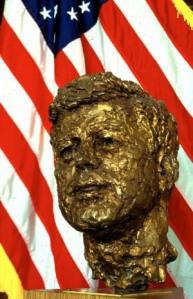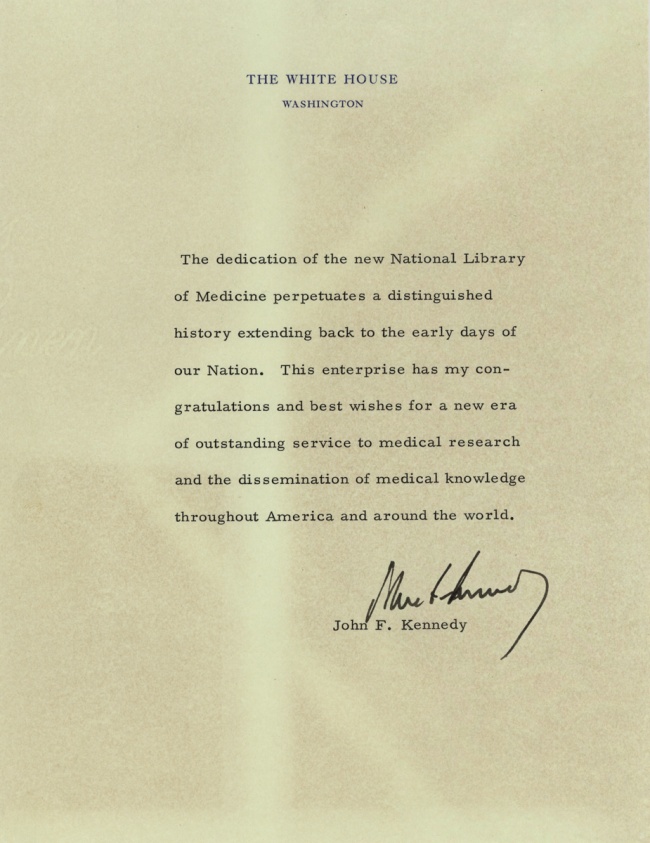John F. Kennedy and the National Library of Medicine
This week marks the fiftieth anniversary of the assassination of John F. Kennedy, an occasion to reflect on that tumultuous moment in history and on the legacy of America’s thirty-fifth president.
One chapter in Kennedy’s legacy involves the National Library of Medicine. During his tenure as senator of Massachusetts (1953-1960) Kennedy co-sponsored with Alabama senator J. Lister Hill a bill which transferred the Library, then known as the Armed Forces Medical Library, to the U.S. Public Health Service and named it the National Library of Medicine (NLM). President Dwight D. Eisenhower signed the bill into law on August 3, 1956. Kennedy saw his vision realized in 1962 when, during his presidency, the National Library of Medicine opened its doors on the campus of the National Institutes of Health in Bethesda, Maryland. Learn more about the legislative chronology of the National Library of Medicine here.

Bust of John F. Kennedy, by Robert Berks, located at the National Library of Medicine. It is a replica of the large bust located in the grand foyer of the Kennedy Center for the Performing Arts in Washington, DC.
During the following summer, when the second International Congress on Medical Librarianship met in Washington, D.C., Kennedy greeted members of the Congress on the South Lawn of the White House. In his welcoming remarks, Kennedy spoke about the establishment of the National Library of Medicine. NLM had just begun an exciting project to create a state-of-the-art computer system called MEDLARS (Medical Literature Analysis and Retrieval System) to automate the process of indexing medical literature, and Kennedy, always interested in burgeoning technology, extolled the value of medical libraries and medical librarianship for contemporary research and the sharing of medical and scientific knowledge. Thanks to the John F. Kennedy Presidential Library and Museum, we can hear Kennedy’s remarks today.
Nine years after the assassination, the Kennedy family donated a bronze bust of John F. Kennedy to the National Library of Medicine. His brother, Senator Edward Kennedy, remarked at the presentation ceremony that President Kennedy “had a deep and abiding concern for the health of all Americans, and clearly foresaw the necessity for a national institution to serve the information needs of health professionals.”
Kennedy lived his life with an eye on the future. Whether he was committing America’s resources to putting a man on the moon, or pushing legislation to ensure that the world’s brightest medical researchers have access to the latest published literature, he was a stalwart advocate for scientific progress. As we look back at the tragically short life of John Fitzgerald Kennedy on this sad anniversary, we should remember his enduring legacy of support for scientific progress, a legacy that lives today in the National Library of Medicine.
Undated, signed letter from John F. Kennedy, on the occasion of the dedication of the new National Library of Medicine,” and offering his “congratulations and best wishes for a new era of outstanding service to medical research and the dissemination of medical knowledge throughout America and around the world.”
National Library of Medicine MS C 1
